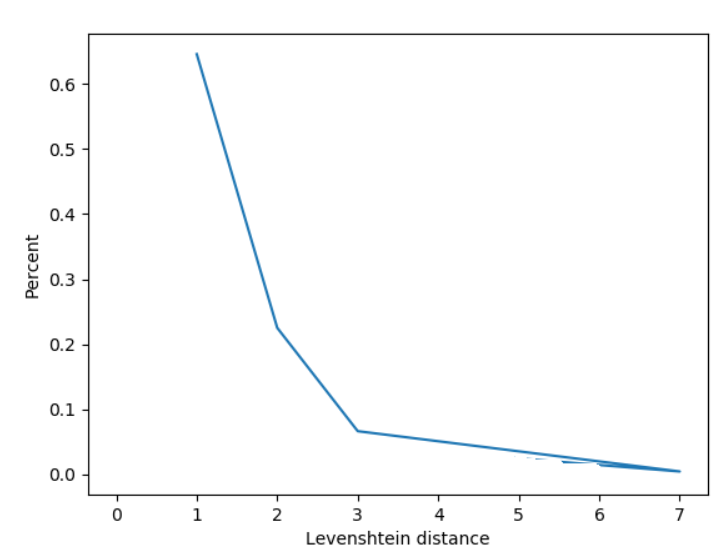I'm trying to find a statistical way to get an approximate distribution of all human noising. I have a dataset of over 300,000 samples of people noising words. I took basic Statistics and I would know how to do this for finding the mean or confidence interval of a Gaussian, but given the plot of the data it fits closer to an exponential distribution. I'm hoping to find a confidence interval or an approximate distribution of the true distribution of human noising on words given the data below.
The statistic used is the Levenshtein distance, which is the minimum number of insertions, deletions or letter substitutions needed to convert a misspelled (noised) word into a correct spelling (clean word). This was applied to calculate the percent out of the 300,000 words that the distance was x, where y is the percent of the sample and x is the Levenshtein distance. The words in the sample dataset are of varying length.
Given this sample I want to infer the distribution of the Levenshtein distance of single word noising of the population, which I'm assuming will also be an exponential or exponential.

